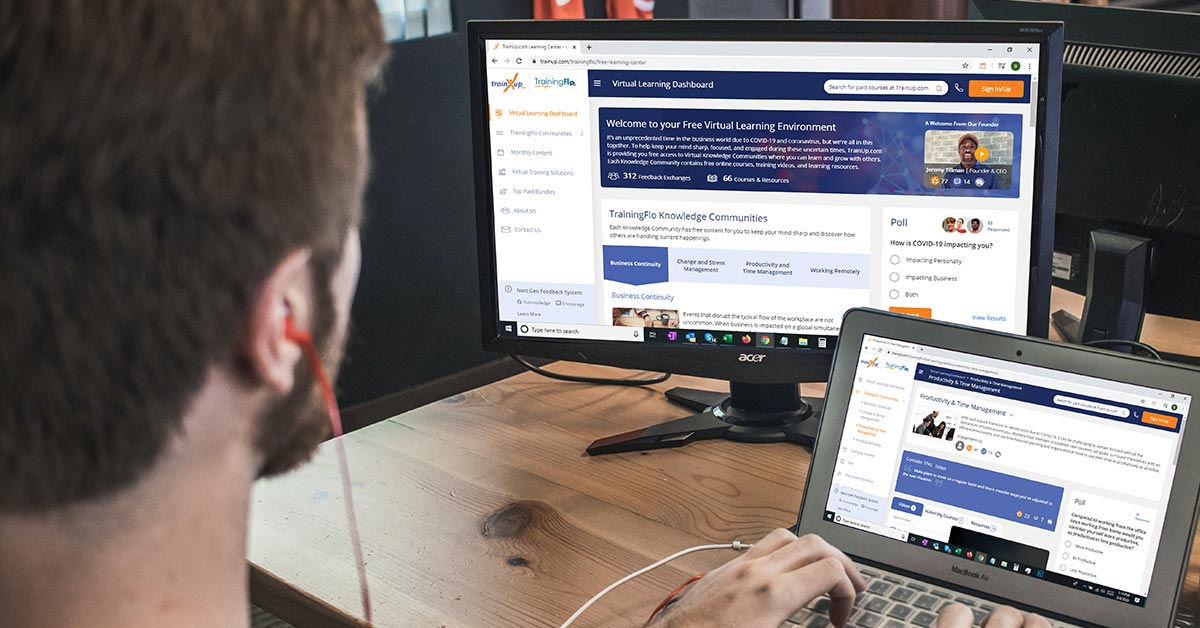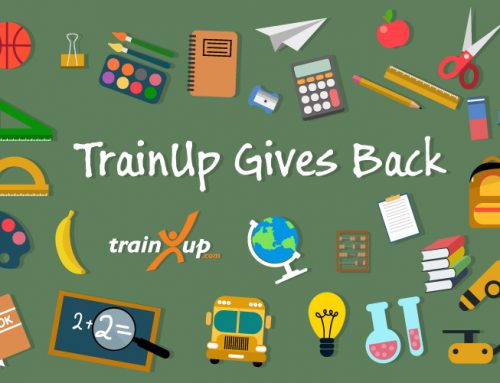As we look ahead and think about what corporate learning and development will look like in 2020, one core theme shines strongly – The future of learning will be more individualized than ever, yet strikingly collaborative at the same time.
Workers of today and tomorrow are hungry for growth and opportunities to develop their skills, professionally and personally. According to Jennifer Robinson at Gallup, 59% of millennial job seekers, compared with 44% of Gen Xers and 41% of baby boomers, report that opportunities to learn and grow are extremely important factors when job searching. Furthermore, studies have revealed that millennial workers give more value to skills acquisition and career enhancement opportunities, as compared to financial rewards and compensation.
And thus, HR teams that are not placing a keen focus on their L&D strategies may be faced with higher than average turnover rates, with employees quicker to switch jobs if they do not see the growth potential in their current roles.
So how are corporate training buyers and L&D practitioners embracing such a kindled desire for knowledge and opportunity? With such a focus on the individual learner, out-of-the-box, one-size-fits-all solutions are becoming more and more obsolete as various learning delivery methods become available to the learner, as well as a movement toward self-directed, well-rounded and informal learning.
Here are some of the trends we will observe into the coming year.
Advancement of Work-Life / Soft-Skills Training
Leadership / management, problem-solving, collaboration, and communication skills are set to be a rising focus in the ever-evolving digital era of learning. These are the types of skills that enable workers to better navigate the work-life demands that are outside of our core disciplines, but help us better navigate changing corporate climates. Work-life skills are not job-specific and are more difficult to quantify, define and evaluate. They are essential, however, for adaptability and help us think strategically as well as creatively.
It comes as no surprise that practitioners are forecasting continued growth in leadership-related training. In 2019, 40% of all TrainUp.com customers registered for leadership, management, or supervisor-oriented training, up a solid 5 points from 2018’s 34.7%.
Furthermore, other soft-skills continue to dominate the training landscape, with an additional 25% of TrainUp.com registrations pertaining to courses in communication, time management, conflict management, and personal development.
Part of the reason for such a big focus on soft skills training is because they are not learned in a one-and-done training event. If that were the case, we’d all be the best leaders! According to Ken Taylor at Training Industry, employees require multiple training experiences over an extended period of time to learn and practice these skills in an effort to truly develop them.
The continued focus of soft-skills training along with a shift toward upskilling and reskilling (versus turnover and recruiting) make the need for innovative training solutions with a wide array of approaches greater than ever.
The Conversation identifies multiple modalities and learning methods available to today’s learners, as training content becomes responsive, adaptive, personalized, mobile, on-demand, self-directed, experiential, collaborative, and social. Some training must be available at the moment employees need it, also called just-in-time training, or during the flow of work.
Just as the experts are forecasting, we foresee a continued focus on soft skills training, and L&D professionals must create comprehensive learning experiences to develop this critical skill set.
Expanded Role of AI-Driven Micro-Feedback
With such a focus shift toward on the individual learner, there are various ways AI will impact employees’ learning experiences in the new decade. ATD reports that only 6 percent of HR professionals are currently using AI in the workplace, despite that HR leaders believe AI will positively affect both L&D (27 percent) and performance management (26 percent) over the next two years.
As AI continues to gain traction in the workplace, companies must decide how to adapt to this new reality. One solution – fostering a culture of continuous learning and feedback.
Through innovate performance management platforms, AI can create a personalized learning environment that “learns” its learners over time. This helps enhance the employee learning experience in several ways. With the right tools and analytical abilities, AI can help identify top performers within an organization. It can identify knowledge gaps and growth opportunities in training then recommend the content needed to strengthen that particular area. It can customize the individual’s learning path using a blended learning approach and deliver training content in the method best suited to the learner. It can also connect real-time skills development and application back to training material, thus identifying the most effective content – whether formal or informally learned.
Many predict AI will have a considerable impact on the field of educational technology. Its presence in education is expected to grow by 43 percent by 2022.
A Plethora of Better, More Relevant Data
As companies realize the value that these AI-driven systems provide, the need to analyze and understand the resulting data will become a prominent focus in the next five years. Corey Bleich of Edgepoint Learning explains how using data analytic tools to capture the actual ROI of your company’s learning initiatives helps you plan strategically to get the most bang from your training buck.
One notable tool that has multiple real-time analytical reporting functions built into each component is KnowledgeFlo, a next-gen learning, training, and performance management platform that helps companies foster and collect the exchange of micro-feedback on and among training content and user-generated information.
With a myriad of reporting and analytics capabilities provided by performance technology such as KnowledgeFlo at our fingertips, there will be no shortage of data in the modern business environment. Thus, the requirement to make sense of it all and understand how to apply it strategically and accurately becomes much more critical.
And so data literacy and the ability to understand and analyze data will continue to become more of a learning focus at the L&D level, as the need to effectively measure and communicate the value of learning outcomes to HR and business executives is a crucial step in the L&D process.
Continuous Feedback & Engagement
HR Technologist defines employee engagement as the level of involvement and connection one feels in their job, and identifies four core factors affecting employee engagement: Inspiring leadership, career development, internal communication, and a culture of diversity.
Training events and courses are no longer evaluated based on attendance and final scores. Companies are finding new, innovative ways to transform their existing training content from their siloed forms into holistic, collaborative learning experiences.
One of the ways companies are fostering engagement and collaboration is by engaging their learners before and after their live training events. Unboxed Training & Technology recommends leveraging your learning technology to achieve this level of engagement, as well as gamifying training events with ongoing opportunities to earn points and rewards.
Using games and gamification at events to educate, improve the experience, and fight disengagement helps create an environment of collaboration and healthy competition. Furthermore, Ehsan Memari of HR Morning lists multiple benefits of gamification in employee engagement and training, such as better employee feedback, recognition, skill development, teamwork, and shared successes.
The Microlearning Movement
Microlearning is a method of learning that gives information in small doses. These short content bursts are typically spread out over time, engaging the learner for just a few minutes, or even seconds, at a time in intervals throughout each day. Some microlearning videos span 3-4 minutes, others last only 90 seconds.
Microlearning allows employees to access information in bite-sized increments as part of their workday. Employees have a choice as to when it works best for them, making it a great solution for managers who want to include education for employees during the day with minimal negative impact on productivity.
We spoke with Laura Goodrich, author and training practitioner, to gather her expert insights. During our conversation, she touched on the traditional ways of learning, and the differences that microlearning promises.
“Retention levels with traditional learning methods is poor…,” says Goodrich, “…between 10-15%. I was sitting on a plane one day and thinking, this is crazy. We wouldn’t accept 10-15% if we were talking about quality, or safety, so why should we accept this for our corporate learning? That’s when I began the journey towards thinking differently, and ultimately, embracing microlearning.”
Knowing that there is a need for a better solution to learning and knowledge retention, companies are turning to microlearning as a solution.
“We have the tools to improve retention and create blended learning solutions that give learners the chance to literally sleep on it, to observe behavior, have conversations and practice. Not to mention provide them with a small lesson rather than a firehose of learning. We can give people the opportunity to learn in their own way, on their own terms, and create lessons that spur conversations and turn awareness into understanding.”
This learning method does not impact a company’s daily earnings. Furthermore, an employer is actually able to supply these little “knowledge-nuggets” to his or her staff at a lower cost than traditional training, saving money all-around.
Conclusion
With investment in workplace learning and development set to rise yet again next year, we believe 2020 will be the year when learning and development will shift gear from being viewed as an isolated activity to a culture that’s relevant and beneficial to the needs of employees as well as managers and organizations.

















Leave A Comment